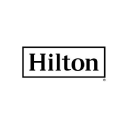/ factorpad.com / stocks / f45qww.html
An ad-free and cookie-free website.
Our quantitative data points are meant to provide a high-level understanding of factors in equity risk models for Hilton Worldwide Holdings In. Portfolio managers use these models to forecast risk, optimize portfolios and review performance.
We show how HLT stock compares to 2,000+ US-based stocks, and to peers in the Accommodation and Food Services sector and Hotels (except Casino Hotels) and Motels industry.
Please do not consider this data as investment advice. Data is downloaded from sources we deem reliable, but errors may occur.
 Hilton Worldwide Holdings Inc.is a leading global hospitality company with a portfolio of 18 world-class brands comprising more than 6,300 properties and more than one million rooms, in 118 countries and territories. Dedicated to fulfilling its mission to be the world's most hospitable company, Hilton has welcomed more than 3 billion guests in its more than 100-year history, earned a top spot on the 2020 World's Best Workplaces list, and was named the 2020 Global Industry Leader on the Dow Jones Sustainability Indices. In 2020, Hilton CleanStay was introduced, bringing an industry-defining standard of cleanliness and disinfection to hotels worldwide. Through the award-winning guest loyalty program Hilton Honors, the more than 110 million members who book directly with Hilton can earn Points for hotel stays and experiences money can't buy, plus enjoy instant benefits, including contactless check-in with room selection, Digital Key, and Connected Room.
Hilton Worldwide Holdings Inc.is a leading global hospitality company with a portfolio of 18 world-class brands comprising more than 6,300 properties and more than one million rooms, in 118 countries and territories. Dedicated to fulfilling its mission to be the world's most hospitable company, Hilton has welcomed more than 3 billion guests in its more than 100-year history, earned a top spot on the 2020 World's Best Workplaces list, and was named the 2020 Global Industry Leader on the Dow Jones Sustainability Indices. In 2020, Hilton CleanStay was introduced, bringing an industry-defining standard of cleanliness and disinfection to hotels worldwide. Through the award-winning guest loyalty program Hilton Honors, the more than 110 million members who book directly with Hilton can earn Points for hotel stays and experiences money can't buy, plus enjoy instant benefits, including contactless check-in with room selection, Digital Key, and Connected Room.
Many of the following risk metrics are standardized and transformed into quantitative factors in institutional-level risk models.
Rankings below represent percentiles from 1 to 100, with 1 being the lowest rating of risk.
Stocks with higher beta exhibit higher sensitivity to the ups and downs in the market. (↑↑)
Stocks with higher market capitalization often have lower risk. (↑↓)
Higher average daily dollar volume over the past 30 days implies lower liquidity risk. (↑↓)
Higher price momentum stocks, aka recent winners, equate to lower risk for many investors. (↑↓)
Style risk factors often include measures of profitability and payout levels.
Companies with higher earnings generally provide lower risk. (↑↓)
Companies with higher dividend yields, if sustaintable, are perceived to have lower risk. (↑↓)
/ factorpad.com / stocks / f45qww.html
A newly-updated free resource. Connect and refer a friend today.